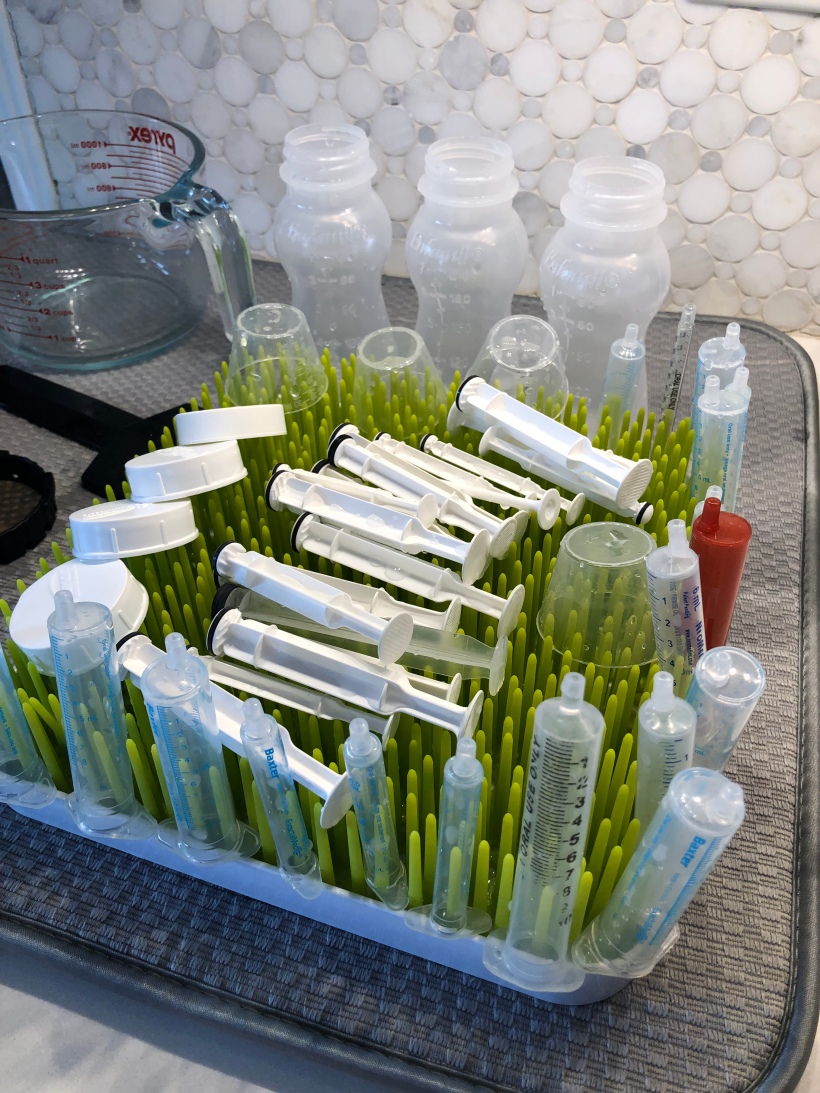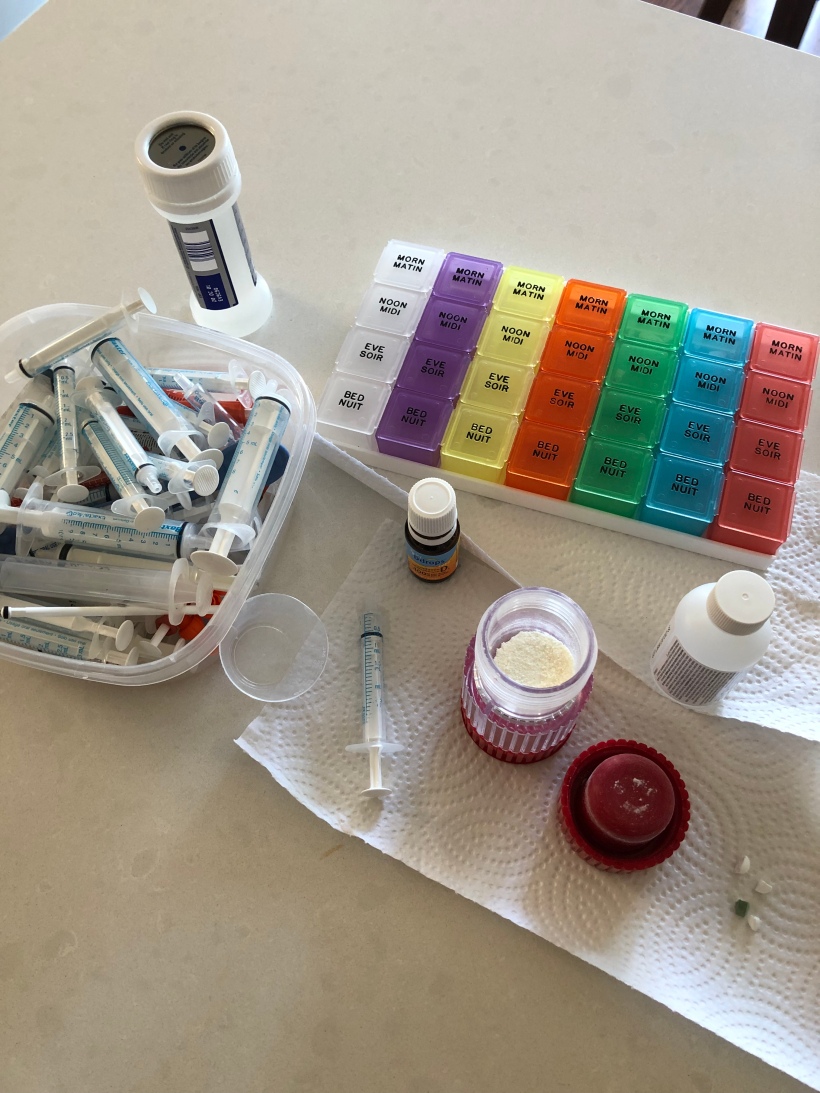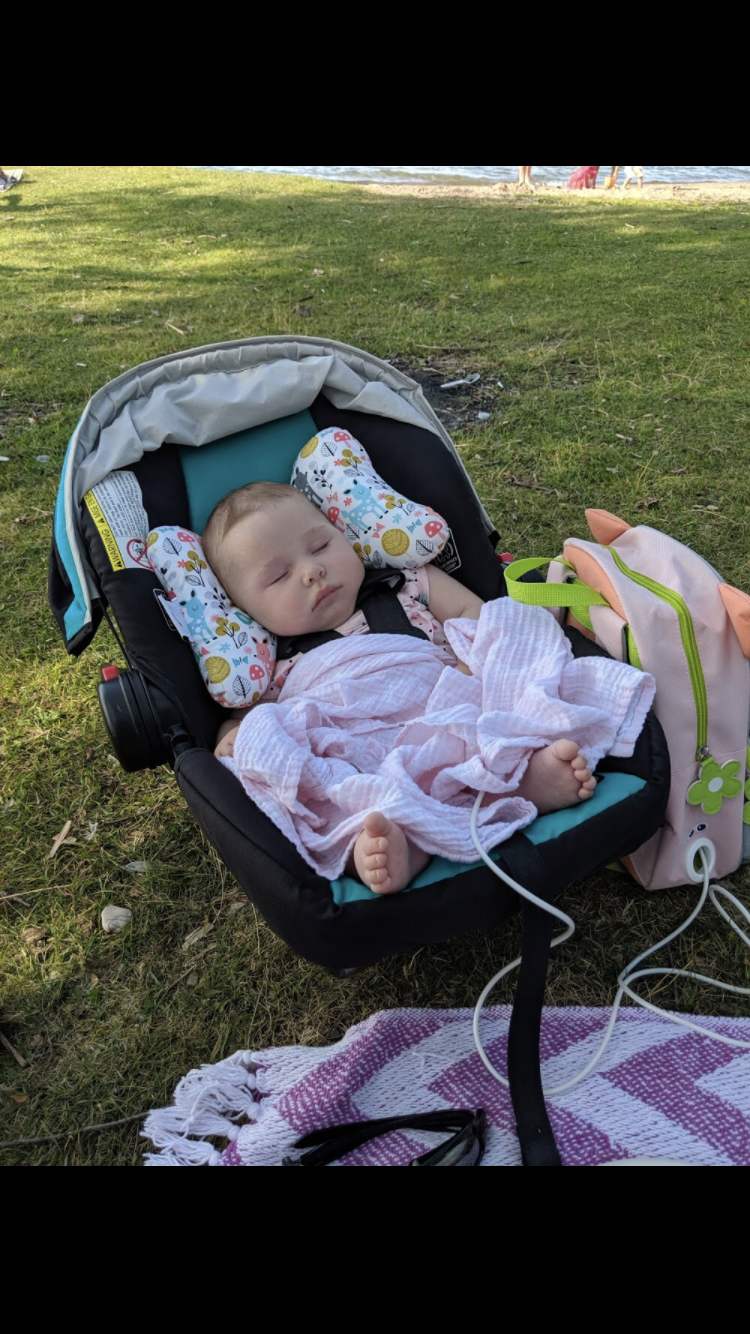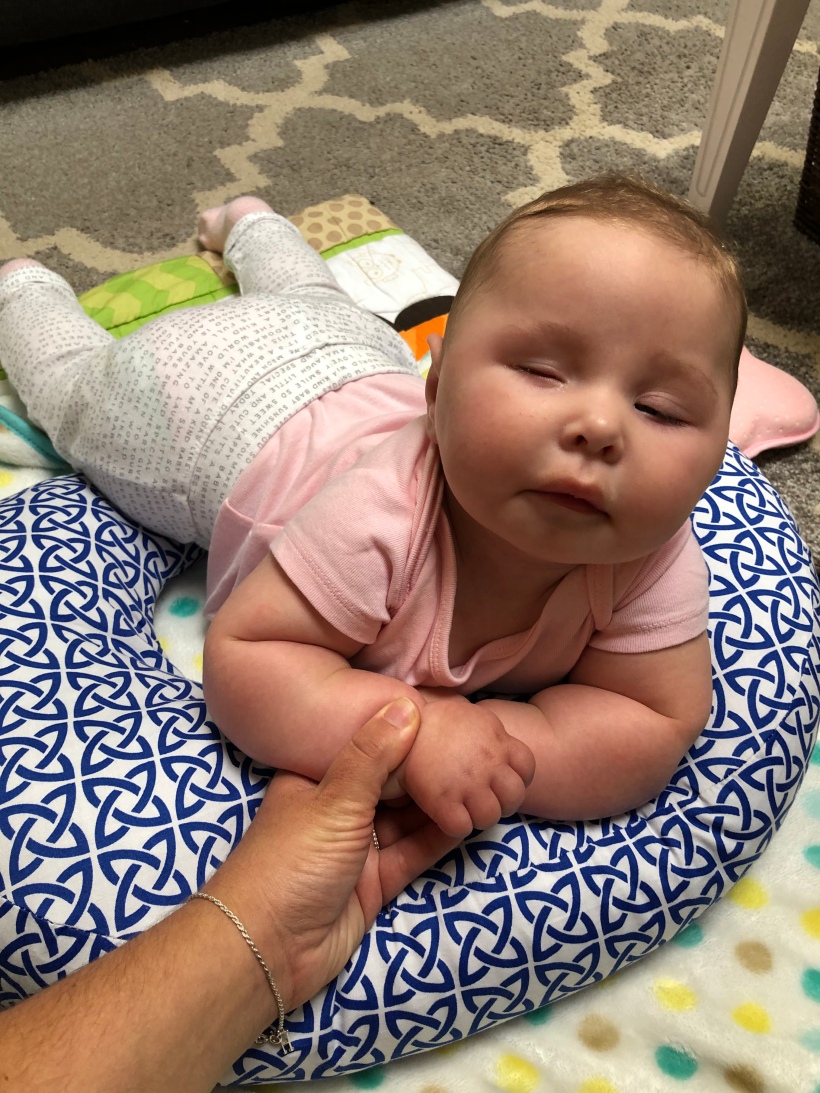In a more recent post explaining what Hope was diagnosed with, I had mentioned that when we first were told of Hope’s medical needs, I was desperate to find people who shared a similar story. I would search people’s blogs trying to find a glimmer of hope. How did people live their lives? Now that we are 9 months into this journey with Hope, I hope that others can find comfort in seeing what we focus on during a typical day – and that there can still be joy in the mess of a life you never expected.
What’s the biggest thing you deal with?
Hope has brain abnormalities, scoliosis, low muscle tone and eye abnormalities – but dang, is she ever cute. Despite all the challenges those things bring, seizures are our biggest issue. When Hope was 3 days old, she had her first seizure. She was treated with medication, and we didn’t see any other seizure activity for a couple of weeks. She was later diagnosed with a specific type of seizure called infantile spasms. Infantile spasms put your development on hold because your brain is constantly active. Her EEG always looks the same. It shows a pattern called “hypsarrhythmia” – the Latin word for chaos.
There are 2 mainline treatments for infantile spasms, and Hope failed both of them. The Keto diet is what we’ve just started to try as a result of these failed attempts.
Infantile spasms are repetitive movements that happen in clusters. Often, they can be missed. They can be as simple as an eye roll or twitch – something that seems so small, but can be so detrimental. For Hope, she will often do 2 different movements, and do them in clusters about 10 – 15 times a day. She will either yelp very loudly while twisting to the side, or her eye will roll, lips will smack and her body with slightly twitch, while crying. These two movements happen at any time of day, and any type of stress to the body can increase them – like a fever, sickness – even constipation!
We record each seizure type and duration in a chart, so that we can compare our days with the team of neurologists at Sick Kids.
While Hope is having a seizure, we comfort her. We usually speak softly to her, sing or pray while holding her.
Syringes, pill crushers and medicine – oh my!
I have become that person who has a favourite syringe. A big portion of our day is consumed with getting Hope’s many medicines and vitamins ready. That involves crushing pills, adding water, and administering each one through her G-tube. Hope is on 4 anti seizure meds, a reflux medication and CBD oil – she gets these twice a day. She is also on 5 supplements because of the lack of vitamins from the Keto diet. So, as you can imagine, that’s a lot of syringes to wash, dry and assemble each day. When we first came home from the hospital she was on 1 medication, once a day – that is crazy to me. Crazy because a couple of times I was close to a complete breakdown because I was afraid I’d forget to give it to her, or that she’d spit it out. We’d go out and bring her medicine with her, and I’d double check her bag 20 times before we left to make sure we had it. I’m happy to say that although we are still insanely organized, our stress level has gone way down. We can get those meds and vitamins ready in no time now, and have them all packed and ready to go when we go out.


Putting each syringe back together and away once they dry makes my heart happy – see, you can find joy in anything!
Tubie Life
I knew that many girls with Aicardi Syndrome needed G-tubes. Knowing that Hope may need one eventually would keep me up at night. We fought against it like nothing else, but it came down to her silently aspirating a little bit. In order to start the Keto diet to help with her seizures, we had to agree to a G-tube. Long story short, and many tears later…guys, the G-tube is…
not. that. bad.
Actually, it’s super simple and has made our life so much easier – I just didn’t realize at the time how stressful feeding time was. Hope has always had the ability to swallow, but depending on the medication and dosage she was on, many times she struggled to stay awake while she ate. Add that to long days and long drives to appointments and I was always trying to feed her. Now, no matter what, wherever she is, she can get her feeds, and with Keto, her feeds are her medicine basically. The G-tube allows her to get every last drop. Yes it’s weird and unnatural, but hey – she needs it and it’s available, so we are thankful for this new normal.



“You’re fat, but you’re the GOOD fat” – Avocado affirmation
Because Hope hasn’t reached seizure freedom with her medication, we are now trying the Keto diet. A diet that has proven to be effective for many people with epilepsy – so we are hoping it works for Hope. She’s not on bacon and avocados just yet 😉 but every evening we make a batch of her keto formula that (right now) consists of Keto-Cal (a high oil/fat formula), microlipids (fat), protein powder and water. We use a scale to measure everything, blend it up, and pour it into 5 bottles for her 5 feeds for the day. Each feed takes 2 hours to run through her G-tube, and she feeds every 4 hours with a break at night. Along with her feeds, we are consistently checking her urine to see what level of Ketosis she is in, and checking her blood sugar to make sure everything stays stable.

Exercise? I thought you said “extra fries”
Exercise, and different therapies, are a big part of Hopey’s day. I think the poor thing pretends to sleep some days because she knows the second she gets up, we’re getting started. It is as simple as stretches all over her body, tummy time, sitting upright in a chair and constantly moving positions. Hope is hypotonic, which is a fancy word for having low muscle tone – she’s pretty floppy. She needs to work extra hard to do simple things that other kids could do for her age – like bring her hands together when she’s laying down. So we are always stretching, finding new positions and working on the same repetitive movements over and over again to build her tone and help her brain make new connections. This by far is my favourite part of the day – even though it’s all throughout the day. I will admit though, it can be discouraging because you work so hard and often see the tiniest amount of progress – like so tiny – like we squeal when she stretches and lifts her legs at the same time.
But it’s ok – it reminds me over and over again that we can’t take anything for granted, and that there is so much joy found in the littlest of things.





I know I’ve mentioned a lot of things – and there is still so much more. There are endless cuddles, bath time, stories, poo-nami’s and other therapies. There is laughter and tears. But, if you are reading this and you just received that dreaded diagnosis, please please please know this one thing:
Your baby is a gift.
Every single life is precious – no matter what it may look like. Yes, it’s going to be so hard – but you can do it. On those difficult days, we remind ourselves that God created Hope, fearfully and wonderfully. That He chose US to be her parents. That He is leading us and guiding us every step of the way, and we just need to do the best we can to take care of her. That even though there is sadness, there is honestly and without a doubt, so much joy. It is a privilege to be her parents.
So embrace those moments of sadness – of questioning why this is happening to you. These moments are necessary and your feelings are valid. Cry, vent, do what you need to do. But please, don’t spend too much time there. I still struggle with this, and will probably continue to do so for a while. But once you accept the fact that this is your life, and throw away the expectations you did have, it does become easier day by day.
And remember, it’s all going to be ok.
